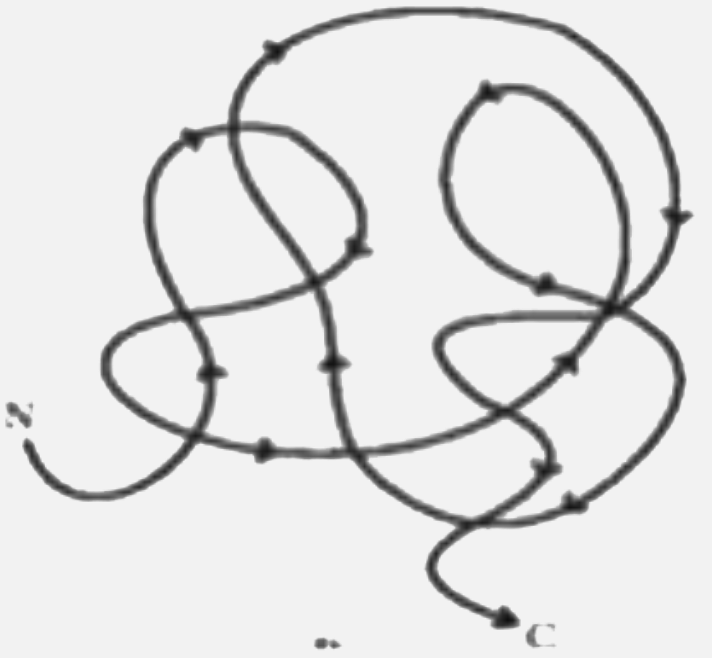If we observe the structure of proteins, disulphide bonds are formed between
Cysteine residues that are close together
Cystine residues that are close together
Proline residues that are close together
Histidine residues that are close together
The correct Answer is:A
To solve the question regarding the formation of disulfide bonds in proteins, we will follow these steps:
1. Understanding Protein Structure:
- Proteins are made up of long chains of amino acids, which can be classified as polypeptides.
Hint: Remember that proteins are polymers of amino acids.
2. Identifying Sulfur-Containing Amino Acids:
- Among the 20 standard amino acids, only a few contain sulfur. The two primary sulfur-containing amino acids are methionine and cysteine.
Hint: Focus on the amino acids that have sulfur in their side chains.
3. Formation of Disulfide Bonds:
- Disulfide bonds (or bridges) are formed specifically between the thiol (-SH) groups of cysteine residues. When two cysteine molecules come close together, they can undergo oxidation to form a covalent bond known as a disulfide bond (–S–S–).
Hint: Recall that disulfide bonds are formed between the side chains of cysteine.
4. Examples of Disulfide Bonds in Proteins:
- Disulfide bonds play a crucial role in stabilizing the three-dimensional structure of proteins. For example, they are found in antibodies and insulin, linking different chains or loops within the protein structure.
Hint: Think about how disulfide bonds contribute to the stability of protein structures.
5. Conclusion:
- Since disulfide bonds are formed between cysteine residues, the correct answer to the question is that disulfide bonds are formed between cysteine residues that are close together.
Hint: Always check the options provided in a question to identify the correct amino acids involved.
Final Answer:
Disulfide bonds are formed between cysteine residues that are close together.
- Proteins are made up of long chains of amino acids, which can be classified as polypeptides.
- Among the 20 standard amino acids, only a few contain sulfur. The two primary sulfur-containing amino acids are methionine and cysteine.
- Disulfide bonds (or bridges) are formed specifically between the thiol (-SH) groups of cysteine residues. When two cysteine molecules come close together, they can undergo oxidation to form a covalent bond known as a disulfide bond (–S–S–).
- Disulfide bonds play a crucial role in stabilizing the three-dimensional structure of proteins. For example, they are found in antibodies and insulin, linking different chains or loops within the protein structure.
- Since disulfide bonds are formed between cysteine residues, the correct answer to the question is that disulfide bonds are formed between cysteine residues that are close together.
Disulfide bonds are formed between cysteine residues that are close together.
Similar Questions
Knowledge Check
Quaternary structure of protein
Aconsists of four subunitsBmay be either a or β-helixCis unrelated to the function of proteinDis dictated by the primary structure of the subunitsThe structure of a protein is determined by :
Aelectrostatic bondingBamino acid sequenceCamino acid compositionDhydrophobic bonding
In the structure of pro - insulin in humans disulphide bonds exist between
View SolutionIn the primary structure of protein
View SolutionNHC structural proteins are
View SolutionPhosophodiester bond is formed between
View SolutionName a few structural proteins.
View SolutionThe given structure of protein corresponds to :

View Solution
